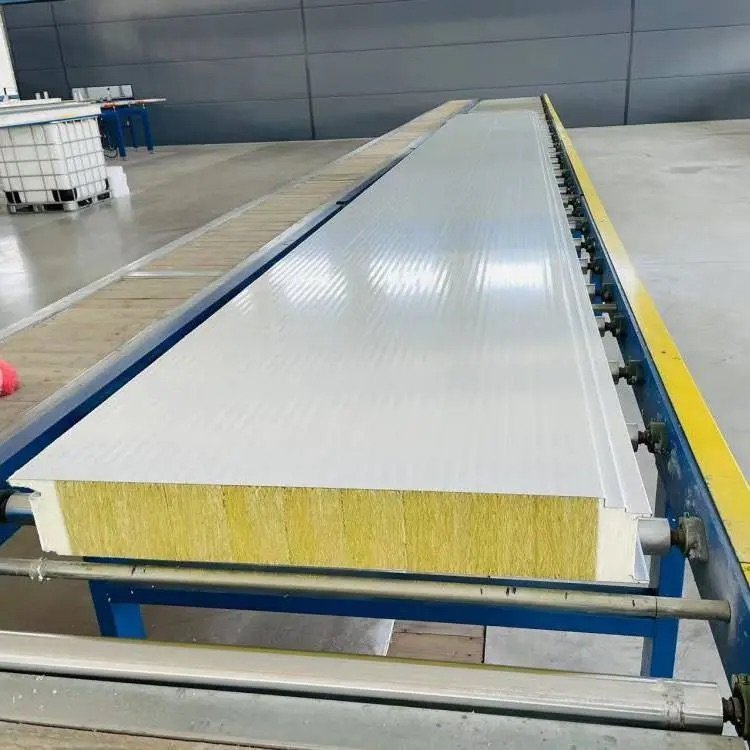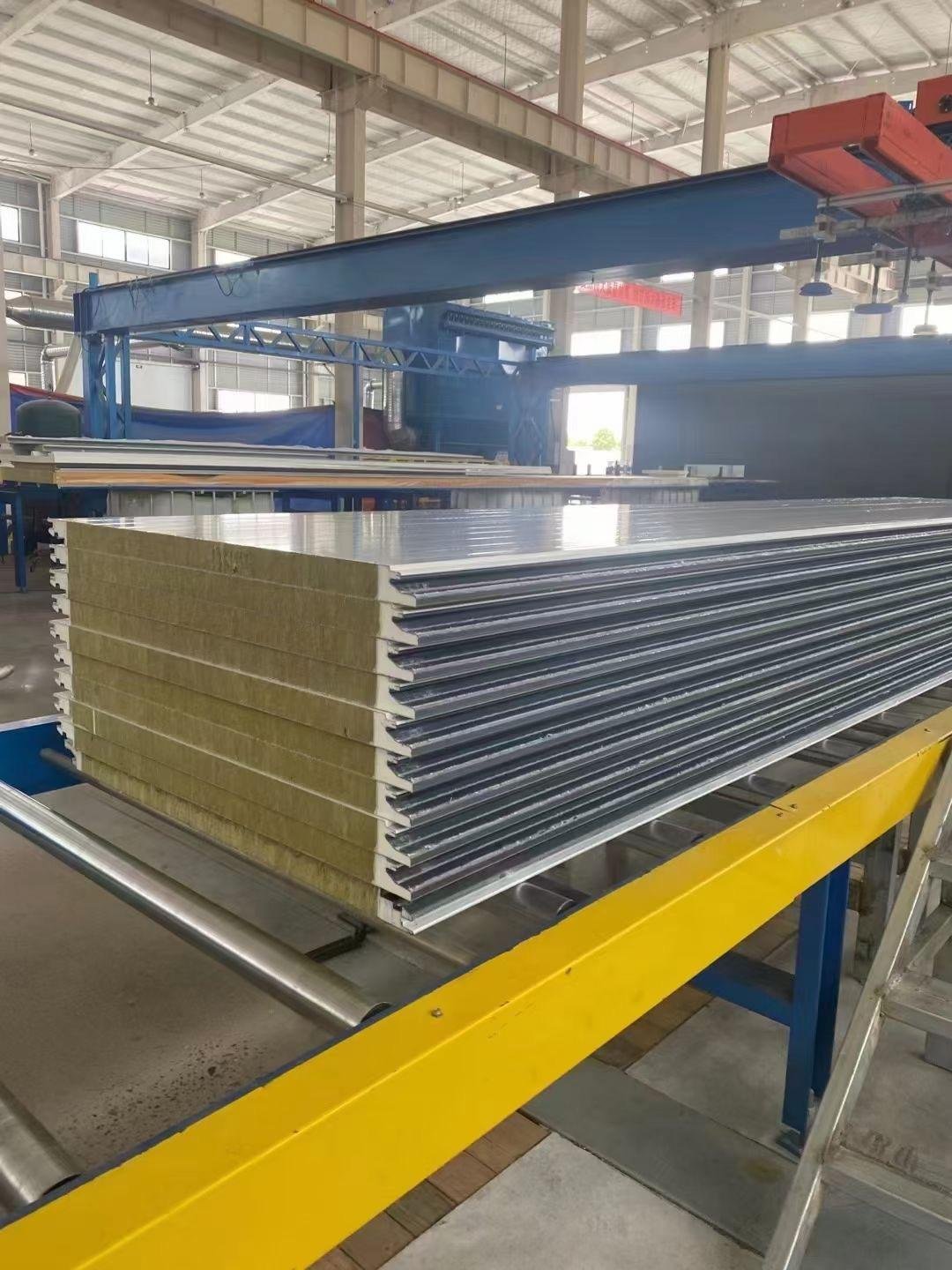
Choosing insulation depends on what you need most. Rockwool is great for fire safety and blocking noise, making it a rockwool better option for those concerned about safety and tranquility. It doesn’t burn and reduces sound well, ensuring a safe and quiet environment. PIR is best for keeping heat in and saving energy, as it effectively stops heat from escaping, which lowers energy costs. However, rockwool is better for fire protection and noise reduction. PIR is good when you need to save space. Both materials solve different problems, so knowing their benefits helps you pick the right one.
Key Takeaways
Rockwool is great for fire safety and blocking noise. It works well in places needing safety and quietness.
PIR insulation keeps heat in better, saving energy in small spaces.
Use Rockwool for areas needing heat resistance and soundproofing, like factories or theaters.
PIR is good for modern buildings with little space. It insulates well without using much room.
Think about the environment. Rockwool is eco-friendly and recyclable. PIR has more waste and is harder to dispose of.
Thermal Performance

Comparing Thermal Conductivity
Rockwool insulation properties
Rockwool helps keep indoor temperatures steady. Its thermal conductivity is between 0.032 and 0.040 W m–1 K–1. This makes it as effective as materials like mineral wool. It reduces heat transfer, keeping homes cozy in extreme weather. Rockwool works well even in humid or hot conditions. Tests at 50°C and 70°C with 90% humidity prove this. These features make rockwool useful in many settings.
PIR’s superior thermal efficiency
PIR is known for its great thermal efficiency. Its thermal conductivity is only 0.023 W m–1 K–1. This is lower than rockwool and many other materials. PIR provides the same insulation with thinner layers. This makes it perfect for small spaces. Tests show PIR performs as expected (R² = 0.95). If saving energy and space matters, PIR is a top choice.
Applications for Thermal Insulation
Rockwool better for high-temperature areas
Rockwool works well in very hot places. It can handle high heat without breaking down. This makes it great for factories or boiler rooms. It stays strong under heat stress, lasting a long time.
PIR for space-saving insulation
PIR is best for tight spaces needing good insulation. Its thin design and strong resistance to heat loss are ideal. It’s great for modern buildings where space is limited. PIR works well for walls, roofs, and floors without taking up much room.
Fire Resistance

Better Fire Protection
Rockwool doesn’t burn
Rockwool is great for fire safety. It doesn’t catch fire or help flames spread. This makes it a safe choice for places with fire risks.
Rockwool insulation won’t burn or spread fire, offering important safety benefits. PIR foam, however, can catch fire at just 250°C, making it riskier.
PIR’s fire safety issues
PIR is good for keeping heat in but not for fire safety. It can burn at lower temperatures, so it’s not the best for places needing strict fire protection. While it slows fire a bit, it’s not as safe as rockwool.
Where Fire Safety Matters
Rockwool for fire-sensitive areas
Rockwool is perfect for places needing strong fire protection. It can handle high heat without burning, making it great for factories, offices, and homes with strict fire rules.
Tests show rockwool meets fire safety standards.
Studies prove fire-safe materials can last 60 minutes at 300°C, keeping people safe.
PIR for safer, low-risk spaces
PIR is fine for places with little fire danger. It works well where keeping heat in is more important than fire safety. But rules often require PIR to have a barrier for extra safety.
Building codes say PIR must be covered by approved barriers.
This keeps it safe while still insulating well.
Acoustic Insulation
Soundproofing Capabilities
Rockwool’s superior sound absorption
Rockwool is great for blocking noise. Its thick, fibrous build traps sound waves. This lowers noise levels effectively. It’s often used in places needing quiet, like studios or offices. Rockwool has a high Noise Reduction Coefficient (NRC). This means it absorbs sound well across many frequencies. Thicker rockwool layers work even better. More thickness improves its ability to block sound. Its density also helps. It doesn’t reflect or let sound pass through easily.
PIR’s limitations in noise reduction
PIR is not as good for soundproofing. It focuses more on keeping heat in. Its stiff structure doesn’t absorb sound well. PIR can reduce some noise but not as much as rockwool. If soundproofing is important, PIR isn’t the best option.
Applications for Noise Control
Rockwool better for soundproofing
Rockwool is perfect for spaces needing quiet. It absorbs sound, making it great for home theaters or music rooms. It also works well in factories or noisy areas. Rockwool cuts outside noise and stops sound between rooms. This makes spaces quieter and more peaceful. You can use it in walls, ceilings, or floors for full noise control.
PIR’s limited acoustic applications
PIR is better for keeping heat in than blocking noise. It doesn’t work well for soundproofing. PIR is fine for places where noise isn’t a big issue. You might use it in storage rooms or less busy areas. While it keeps spaces warm, it doesn’t block much sound.
Tip: Use materials with high NRC and good thickness for soundproofing. Rockwool is a great choice for quiet spaces because it absorbs sound so well.
Cost and Long-term Value
Initial Costs
Rockwool’s affordability
Rockwool insulation is often priced moderately. Its cost depends on factors like labor, fuel, and production complexity. Reports show rockwool can cost 20-30% more than PIR boards. This higher price comes from the tools and work needed to make it. Even so, rockwool is popular for its balance of price and performance.
PIR’s higher upfront cost
PIR insulation costs more at first. Its strong thermal abilities and space-saving design raise its price. Studies show PIR costs more than EPS but saves more energy over time. This makes it a good choice for people who want efficiency and long-term value.
Insulation Type | Description | Cost Dynamics |
|---|---|---|
EPS | Expanded Polystyrene, cost-effective | Generally lower cost compared to others |
PIR | Polyisocyanurate, high performance | Higher cost due to performance benefits |
Mineral Wool | Natural or recycled materials | Moderate cost, varies based on sourcing |
Durability and Maintenance
Rockwool insulation’s long-term performance
Rockwool lasts a long time. It resists damage and keeps working for decades. It doesn’t burn and handles moisture well, needing little upkeep. This makes it a dependable option for homes and factories.
PIR’s lifespan and maintenance needs
PIR insulation is also durable, lasting 30 to 50 years. But it might need extra fire barriers, which adds to maintenance. Even with this, PIR is great for projects needing top thermal performance.
Insulation Type | Average Lifespan |
|---|---|
Reflective Foil Insulation | Up to 20 years |
Insulating Coatings | 10-15 years |
Rigid Foam Boards (PIR) | 30-50 years |
Spray Foam Insulation | Up to 80 years |
Value for Money
Rockwool better for cost-effectiveness
Rockwool gives great value for its price. Its moderate cost, durability, and low upkeep make it a smart choice. It works well for years without needing repairs or replacements.
PIR’s value in high-efficiency insulation
PIR is worth it for high-efficiency needs. Its excellent thermal features and energy savings make up for its higher cost. If saving energy and space matters most, PIR is a wise pick.
Tip: Think about both upfront costs and long-term benefits. Rockwool is durable and affordable, while PIR saves energy and offers great thermal efficiency.
Environmental Impact
Sustainability and Recycling
Rockwool’s eco-friendly properties
Rockwool is a very eco-friendly insulation material. It’s made from natural stone and recycled items. This lowers its impact on the environment. You can recycle Rockwool many times without losing quality. This makes it a great choice for green projects. Studies show materials like sheep wool and hemp fiber are very eco-friendly. Rockwool is similar because it’s recyclable and has low global warming potential (GWP100). Locally made Rockwool can even help reach net-zero emissions. This makes it perfect for projects focused on the environment.
Benefits of Rockwool:
Can be reused and recycled.
Low environmental impact in many areas.
Made using sustainable methods.
PIR’s environmental challenges
PIR insulation has some environmental problems. It’s made using fossil fuels, which raises its carbon footprint. Unlike Rockwool, PIR is hard to recycle. Most PIR waste ends up in landfills or is burned, causing pollution. Studies show PIR has a higher carbon footprint than bio-based materials. While PIR is great for saving energy, it’s not the best for eco-conscious builders.
Manufacturing and Disposal
Rockwool insulation production process
Making Rockwool involves melting stone and recycled materials at high heat. This uses energy but creates a strong, sustainable product. Rockwool’s production releases fewer greenhouse gases than synthetic materials. Studies like Schmidt et al. (2004a) show Rockwool has a smaller environmental impact. Plus, Rockwool can be recycled, which reduces waste and supports a circular economy.
Study | Focus | Findings |
|---|---|---|
Schmidt et al. (2004a) | Life cycle assessment of insulation | Stone wool has lower environmental impacts compared to synthetic options. |
Grazieschi et al. (2021) | Cradle-to-gate data collection | Highlights the variance in environmental impacts of insulation materials. |
PIR’s disposal limitations
PIR insulation is hard to dispose of sustainably. It can’t be recycled easily, so most of it goes to landfills. Burning PIR waste also releases harmful gases. Unlike Rockwool, PIR doesn’t have a green end-of-life solution. Studies like Cascione et al. (2022a) stress the need for better disposal methods for PIR. If you care about the environment, PIR might not be the best option.
Note: Think about how insulation affects the environment before choosing. Rockwool is a greener option compared to PIR.
Ease of Installation and Versatility
Handling and Installation
Rockwool’s flexibility
Rockwool is easy to work with during installation. Its soft fibers can be cut and shaped to fit tricky spaces. This makes it great for uneven surfaces or special designs. You can handle Rockwool safely with simple gear like gloves. It doesn’t irritate the skin like some materials. But you should wear a mask to avoid breathing in tiny particles.
Easy to cut and shape.
Safe to handle with basic protection.
Works well in odd-shaped spaces.
PIR’s lightweight structure
PIR is very light, making it easy to carry and install. Its stiff panels stay in shape, perfect for flat areas like walls or floors. You don’t need special tools to install PIR, which saves time. But keep PIR out of direct sunlight for too long. UV rays can damage it during installation.
Comparing insulation materials:
PIR: Light with strong heat resistance.
Mineral Wool: Flexible but needs careful handling.
Versatility in Applications
Rockwool better for diverse projects
Rockwool works for many uses. It’s good for blocking noise, stopping fires, and keeping heat in. You can use it in homes or factories. It handles high heat well, so it’s great for boiler rooms or hot places. Rockwool also stays strong in humid weather without losing its insulating power.
Insulation Type | Performance Strength | Best Conditions |
|---|---|---|
Rockwool | Strong heat resistance | Hot or wet climates |
PIR | High thermal efficiency | Cold climates |
PIR for specific insulation needs
PIR is best when saving space and keeping heat in are key. Its thin panels insulate well without taking up much room. This makes it ideal for small modern buildings. PIR works for walls, roofs, and floors in homes or offices. But it’s not great for stopping noise or fires.
PIR is often used for:
Walls and ceilings in tight spaces.
Floors in energy-saving buildings.
Projects focused on heat insulation.
Tip: Pick Rockwool for fire safety and soundproofing. Use PIR when space and heat efficiency matter most.
When choosing between Rockwool and PIR, think about your needs. Rockwool is best for fire safety, soundproofing, and eco-friendly projects. It doesn’t burn and blocks noise well, making it great for safe and quiet spaces. PIR is better for saving energy and fitting into small spaces. Its thin panels insulate well, perfect for modern buildings with limited room.
Here’s a simple comparison to guide you:
Feature | Rockwool | PIR |
|---|---|---|
High; won’t burn | Low; burns at 250°C | |
Acoustic Insulation | Great at blocking noise | Not as good, reflects sound |
Thermal Efficiency | Decent | Excellent |
Space Efficiency | Thicker | Slim and compact |
In the end, your choice depends on what matters most. Pick Rockwool for safety, quietness, or being eco-friendly. Choose PIR if saving energy and space is more important.
FAQ
What makes Rockwool and PIR different?
Rockwool is great for fire safety and blocking noise. PIR keeps heat in better and takes up less space. Pick one based on what you need most, like safety, quietness, or saving energy.
Why is PIR more expensive than Rockwool?
PIR has better heat-saving features and a slim design. These make it cost more upfront. But it saves energy over time, which can make up for the higher price.
Is Rockwool good for the environment?
Yes, Rockwool is made from natural and recycled materials. It can be reused many times, cutting down on waste. Its production also harms the environment less than synthetic materials.
Can you use Rockwool and PIR together?
Yes, you can combine them for better results. Use Rockwool for fire safety and noise control. Use PIR where saving space and keeping heat in are important. Together, they work well.
Which insulation lasts longer?
Rockwool is durable and needs little care, saving money long-term. PIR saves energy and works efficiently, making its higher cost worth it. Choose based on what matters most to you.







